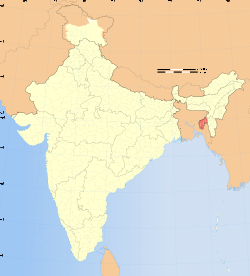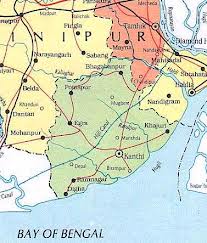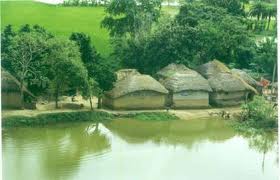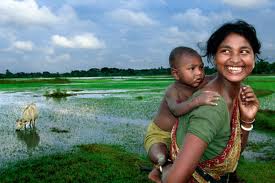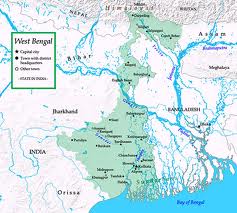“The Gorkhaland movement, which is demanding a few districts in the northern part of West Bengal, has reached a climax. The Gorkhas, who had settled there from outside the state, are now demanding the formation of a separate state by taking advantage of their Indian citizenship. They have launched regular agitations, called strikes, looted, plundered, burnt property, murdered and virtually …
Category Archives: Bengal
Tripura
(July 1986, Calcutta) – Since the dawn of human civilization Tripura has been a part of Bengal. In fact, Tripura is nearly as old as Ráŕh. Its soil, water, people and language are the same as those of Gondwanaland. The ancient Bengali people have been living in Tripura since time immemorial.
Five hundred years ago Tripura was …
Greater Bengal
By P.R. Sarkar
(3 January 1989, Anandanagar) – The Bengali race, which is a blending of the Austric, Mongolian and Negroid races, was created about 5000 years ago. Saḿskrta was the language of the land of Bengal before 5000 years ago, hence Saḿskrta is the guiding language of Bengali. The Bengali language underwent a transformation about 1200 years ago. At this …
Contai Basin Planning
(June 1988, Calcutta) – The Contai Basin is the area between the Rasulpor and Suvarnareka Rivers where they are about to merge in the Bay of Bengal. The Bengali name of Contai is Kán’thi derived from the Sanskrit word kan’thiká. The British changed Kán’thi to Contai because to them Kánthi sounded similar to Kandi in Murshidabad …
Gorkhaland
By P.R. Sarkar
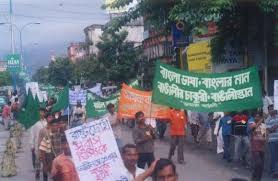 (30 August 1988, Calcutta) – The Gorkhaland movement, which is demanding a few districts in the northern part of West Bengal, has reached a climax. The Gorkhas, who had settled there from outside the state, are now demanding the formation of a separate state by taking advantage of their Indian citizenship. They have launched regular agitations, called …
(30 August 1988, Calcutta) – The Gorkhaland movement, which is demanding a few districts in the northern part of West Bengal, has reached a climax. The Gorkhas, who had settled there from outside the state, are now demanding the formation of a separate state by taking advantage of their Indian citizenship. They have launched regular agitations, called …
Some Developmental Programmes for Bengal
(10 February 1989, Calcutta) – Much can be done to develop the socio-economic potential of Bengal, but to do this you will have to know a great deal about the local area and put this knowledge to practical use. What are the main production towns in Bengal? What are the major cities – that is, which are …
The Original Inhabitants of Bengal
(21 February 1989, Kolkata) – The original inhabitants of Bangalistan include the Rajbanshis from North Bengal; the Mahatos from Ráŕh; the Cakmas from Chattagram and Tripura; the Mahisyas from Midnapore and 24 Paraganas; the Sadgopes from Birbhum; the Namashudras from Jessore and Khulna; and the Ugra Kśatriyas from Burdwan. These original Bengalees may be called the “Játa …
South Bengal
(20 April 1989, Calcutta) – The ancient name for South Bengal is “Samatat”. The land is close to the sea. In colloquial Bengali, Samatat is called Bágri. On the east of Samatat is Banga Dabak, on the west is East Ráŕh, on the north is Barendrabhum and on the south is the Bay of Bengal. That is, …
Economic Exploitation of Bengal
(1981, Calcutta) – According to Karl Marx, the creation of surplus value is the source of economic exploitation. Capitalists convert the surplus value into money value and that is how they accumulate profit. After analysing the capitalist economy, Marx reasoned that all profit is exploitation because profit means the denial of the legitimate right of the working class to the …
Persecution of Proutists Pricks Kolkata’s Conscience 30 Years On
(April 2012) – A seminar on PROUT at Moulali Yuba Kendra, Kolkata earlier this month has caught the interest of the Bengal media. Kolkata’s most popular anti-communist newspaper Bartaman, as well as Pratidin, the Bengali Statesman and Times of Indiaall covered the event in detail.
At the event, economist Dilip Haldar, formerly of Kolkata’s renowed Jhadavpur University, …

